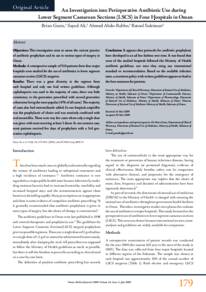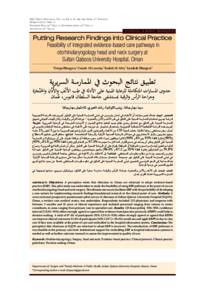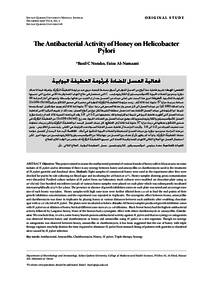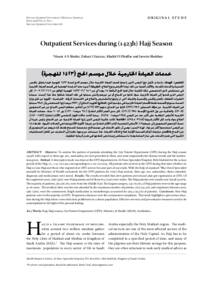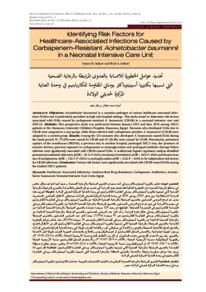Document
An Investigation into perioperative antibiotic use during Lower Segment Caesarean Sections (LSCS) in four hospitals in Oman.
Contributors
Publisher
Oman Medical Specialty Board.
Gregorian
2009-07
Language
English
Subject
English abstract
Objectives: This investigation aims to assess the current practice
of antibiotic prophylaxis and its use in various types of surgery in
Oman.
Methods: A retrospective sample of 510 patients from four major
hospitals were studied for the use of antibiotics in lower segment
caesarean section (LSCS) surgeries.
Results: There was a great diversity in the regimes from
each hospital and only one had written guidelines. Although
cephalosporin was used in the majority of cases, there was little
consistency in the generation prescribed with second generation
cefuroxime being the most popular (47% of all cases). The majority
of cases also had metronidazole added. In one hospital, ampicillin
was the prophylactic of choice and was routinely combined with
oral amoxicillin. There were very few cases where only a single dose
was given with most receiving at least 3 doses. In one extreme case,
most patients received five days of prophylaxis with a 3rd generation cephalosporin.
Conclusion: It appears that protocols for antibiotic prophylaxis
have developed in an ad hoc fashion over time. It was found that
none of the studied hospitals followed the Ministry of Health
antibiotic guidelines, nor were they using any international
standard or recommendation. Based on the available infection
rates, a consistent policy with written guidelines appears to lead to
the best outcomes for patients.
Member of
Resource URL
Citation
Gunn, Brian, Ali,Sayed, Abdo-Rabbo, Ahmed, & Suleiman, Batool (2009). An Investigation into perioperative antibiotic use during Lower Segment Caesarean Sections (LSCS) in four hospitals in Oman. Oman Medical Journal, 24 (3), 179-183.
Category
Journal articles

